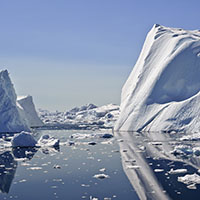EU project sails off to study Arctic sea ice
Some of the most worrying environmental trends related to climate change can be observed in the Arctic. The region is warming up twice as fast as the average change in the rest of the World, with Arctic summer ice having hit an all-time low in 2012 when the EN Environment Programme (UNEP) observed that it had decreased by 50% compared to the average levels of the 80s and 90s. Launched in January 2014, the ICE-ARC project aims to better understand and quantify the multiple stresses involved in these changes while assessing the climatic, environmental, economic, and social impacts they have on a regional and global scale. The 21 organisations involved in ICE-ARC, coordinated by the UK’s Natural Environment Research Council, hope to meet this ambitious objective through the use of autonomous platforms which will monitor some 26 parameters in a cost-effective manner. Araon has already begun the deployment of ICE-ARC’s autonomous platforms, along with others. The platforms relies on two technologies: SIESTA, droppable buoys measuring the dynamics of sea ice, and SATICE GPS buoys. 'The buoy will collect continuous GPS data and other geophysical data (atmospheric, cryospheric, as well as oceanographic) while drifting sea-ice floe,' said Pedro Elosegui of CSIC, leader of the project first working package. 'The data will be streamed over an Iridium satellite link in near-real time to a central computer, where they will be post-processed.' This precious data will be used in two ways. First, it will be fed into an ice-ocean-atmosphere model able to make projections of the rate and nature of future changes in ice cover, ocean structure and atmospheric temperature. Then, the resulting projections will be used in a model that will calculate the impact of the projected physical changes on regional and global economic and social systems. This specific work, carried out under the project’s third work package, sees researchers from the Danish Meteorological Institute working with Inuit hunters in Greenland to observe sea-ice and see how its past and present changes affect local communities, their capacity to adapt and to survive. ICE-ARC is the first project of its kind to couple a global impact model with a physical climate model to directly assess the economic impact of observed and projected climate change events. Project partners are confident that the outputs of the EUR 12 million project, which ends in December 2017, will lead to more effective policy and management options for societal responses to climate change. It also expected to help communities ensure sustainable livelihoods in accordance with their cultural needs.For more nformation, please visit: ICE-ARC http://www.ice-arc.eu/ Project factsheet http://cordis.europa.eu/project/rcn/110891_en.html
Countries
United Kingdom



